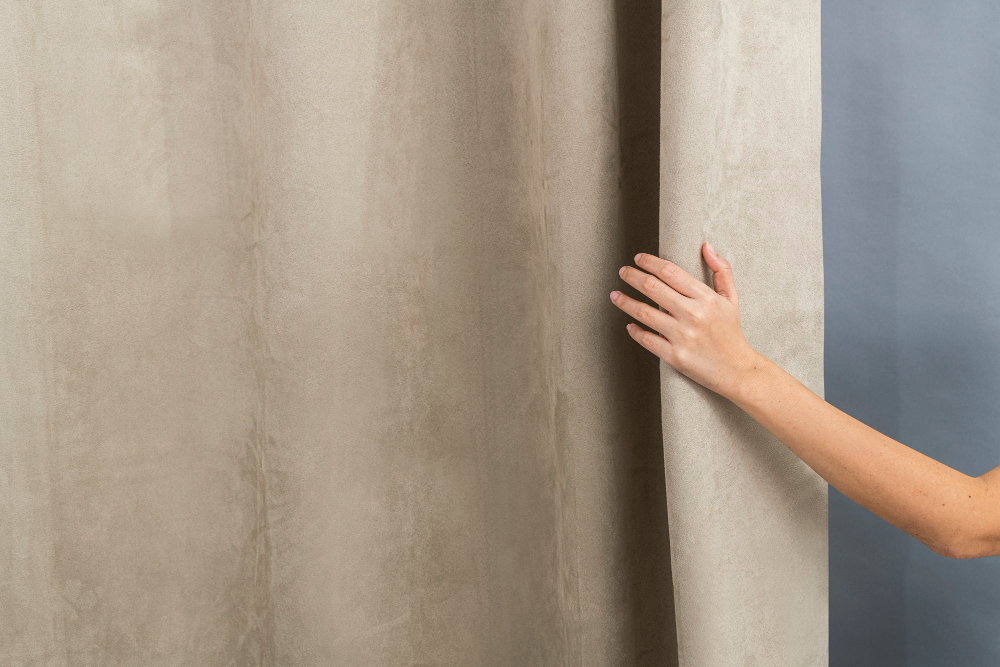Table of Contents
- 1 I. Introduction to Dirty Curtains and Indoor Air Quality
- 2 II. Types of Contaminants Found in Dirty Curtains
- 3 III. Health Risks Associated with Contaminated Curtains
- 4 IV. How Dirty Curtains Affect Indoor Air Quality
- 5 V. Identifying Signs of Dirty Curtains
- 6 VI. Proper Cleaning and Maintenance of Curtains
- 7 VII. Prevention Strategies for Maintaining Clean Curtains
- 8 VIII. The Relationship Between Clean Curtains and Energy Efficiency
- 9 IX. Summary
- 10 X. Frequently Asked Questions (FAQs)
- 10.1 1. How often should curtains be cleaned?
- 10.2 2. Can dirty curtains cause serious health problems?
- 10.3 3. Are some curtain materials better for indoor air quality than others?
- 10.4 4. How can I tell if my curtains are affecting my home’s air quality?
- 10.5 5. What are the best cleaning methods for different types of curtains?
I. Introduction to Dirty Curtains and Indoor Air Quality
A. Definition of indoor air quality
Indoor air quality refers to the cleanliness and safety of the air inside our homes and buildings. It’s something we often overlook, but it plays a huge role in our overall health and well-being. Think about it – we spend so much time indoors, breathing this air day in and day out!
B. Role of curtains in home decor and functionality
Curtains aren’t just pretty face-lifts for our windows. They’re multitaskers! They add a splash of color to our rooms, give us privacy from nosy neighbors, and even help keep our homes cozy by blocking out drafts. I remember when I first hung up curtains in my apartment – it instantly felt more like home!
C. How curtains accumulate dirt and pollutants
Here’s the not-so-fun part: curtains are like giant air filters for our homes. They trap all sorts of stuff floating around in the air. Dust, pollen, pet hair – you name it, curtains catch it. And over time, this build-up can turn our lovely curtains into not-so-lovely sources of indoor pollution.
II. Types of Contaminants Found in Dirty Curtains
A. Dust and dust mites
Dust is like that uninvited guest that always shows up at parties – it’s everywhere! And where there’s dust, there are usually dust mites. These tiny critters love to make their homes in our curtains, munching away on dead skin cells (gross, I know!).
B. Mold and mildew
If your curtains are in a damp area (like a bathroom) or if you live in a humid climate, watch out for mold and mildew. These fungi love moisture and can start growing on your curtains before you even notice. I once had this problem in my old basement apartment – not fun!
C. Pet dander and allergens
For all you pet lovers out there (myself included!), our furry friends can contribute to dirty curtains too. Pet dander, hair, and even outdoor allergens that hitch a ride on their fur can end up trapped in our curtains.
III. Health Risks Associated with Contaminated Curtains
A. Respiratory issues and allergies
All those contaminants in dirty curtains can trigger a whole host of respiratory problems. Sneezing, coughing, wheezing – it’s like having a cold that never goes away. For people with asthma or allergies, dirty curtains can make life really uncomfortable.
B. Skin irritations and rashes
It’s not just about breathing problems. The gunk in dirty curtains can also irritate your skin. Imagine snuggling up against your curtains while reading a book, only to end up with an itchy rash. Not exactly the cozy afternoon you had in mind!
C. Eye and throat irritation
Have you ever walked into a room and suddenly felt your eyes start to water or your throat get scratchy? Dirty curtains could be the culprit. The particles they release can irritate your eyes and throat, making you feel like you’ve got a case of the sniffles.
IV. How Dirty Curtains Affect Indoor Air Quality
A. Release of particulate matter into the air
Every time we open or close dirty curtains, we’re basically giving them a shake – and all that accumulated dust and dirt gets released into the air. It’s like we’re giving ourselves a dose of pollution every time we adjust our window coverings!
B. Contribution to overall indoor pollution levels
Dirty curtains aren’t working alone. They team up with other sources of indoor pollution (like that smelly trash can or the dust bunnies under the couch) to create a cocktail of not-so-great air in our homes.
C. Impact on HVAC system efficiency
Here’s something I never thought about until I talked to an HVAC technician: dirty curtains can make our heating and cooling systems work harder. All those particles can clog up filters and reduce airflow, making our systems less efficient and potentially shortening their lifespan.
V. Identifying Signs of Dirty Curtains
A. Visual indicators of dust and stains
Sometimes, dirty curtains are pretty obvious. You might see a layer of dust when sunlight hits them just right, or notice stains and discoloration. I once had light-colored curtains that started to look distinctly gray – that was my wake-up call!
B. Musty odors and lingering smells
If your curtains start to smell a bit funky, that’s a big red flag. Musty odors often mean mold or mildew growth, while other lingering smells could indicate trapped pollutants.
C. Increased allergy symptoms in the home
Notice that your allergies seem worse when you’re at home? Your curtains might be to blame. If you’re constantly sneezing or have itchy eyes indoors, it might be time to take a closer look at your window treatments.
VI. Proper Cleaning and Maintenance of Curtains
A. Regular dusting and vacuuming techniques
Prevention is better than cure, right? Regular dusting or vacuuming (with a soft brush attachment) can go a long way in keeping your curtains clean. I try to do this every couple of weeks – it’s become part of my cleaning routine.
B. Washing and dry cleaning methods
For deeper cleaning, many curtains can be machine washed or dry cleaned. Always check the care label first! I learned this the hard way when I shrunk a beautiful set of curtains in the wash. Oops!
C. Professional cleaning services
Sometimes, it’s best to call in the pros. Professional curtain cleaning services have special equipment and expertise to get your curtains spotless without damaging them.
VII. Prevention Strategies for Maintaining Clean Curtains
A. Choosing easy-to-clean curtain materials
When shopping for new curtains, consider materials that are easier to clean. Synthetic fabrics often repel dust better than natural fibers. I switched to polyester curtains in my bedroom and noticed a big difference in how quickly they get dirty.
B. Implementing a regular cleaning schedule
Set reminders to clean your curtains regularly. It doesn’t have to be a big production – even a quick vacuum every few weeks can make a big difference.
C. Using air purifiers and dehumidifiers
Air purifiers can help remove particles from the air before they settle on your curtains. And in humid areas, dehumidifiers can prevent mold and mildew growth. I use both in my home and have noticed a big improvement in air quality.
VIII. The Relationship Between Clean Curtains and Energy Efficiency
A. Improved natural light utilization
Clean curtains let in more natural light, reducing the need for artificial lighting. This can lead to energy savings and create a brighter, more cheerful living space.
B. Reduced strain on heating and cooling systems
As we mentioned earlier, clean curtains can help your HVAC system work more efficiently. This means lower energy bills and a smaller carbon footprint.
C. Lower energy costs and environmental impact
By keeping your curtains clean and your HVAC system running smoothly, you’re not just saving money – you’re also doing your bit for the environment. It’s a win-win!
IX. Summary
Clean curtains are more than just a matter of appearance – they play a crucial role in maintaining good indoor air quality and protecting our health. By understanding the risks of dirty curtains and implementing regular cleaning and maintenance routines, we can create healthier, more energy-efficient homes. Remember, a little effort goes a long way in keeping our curtains – and our air – clean and fresh! Need professional curtain cleaning service, we are expert curtain cleaners with over 10 years experience and using latest technology to effectively remove stains, dust, allergens
X. Frequently Asked Questions (FAQs)
1. How often should curtains be cleaned?
It depends on your environment, but generally, a light cleaning every 2-4 weeks and a deep clean every 6-12 months is a good rule of thumb. If you have pets or live in a dusty area, you might need to clean more frequently.
2. Can dirty curtains cause serious health problems?
While dirty curtains alone aren’t likely to cause severe health issues, they can significantly worsen existing conditions like allergies or asthma. For people with respiratory sensitivities, clean curtains can make a big difference in quality of life.
3. Are some curtain materials better for indoor air quality than others?
Yes! Synthetic materials like polyester tend to repel dust and allergens better than natural fibers. However, natural fibers like cotton are often easier to clean thoroughly. It’s about finding the right balance for your needs.
4. How can I tell if my curtains are affecting my home’s air quality?
Look out for increased allergy symptoms, musty odors, visible dust when you move the curtains, or a general feeling of stuffiness in the room. If you notice these signs, it might be time to give your curtains some attention.
5. What are the best cleaning methods for different types of curtains?
It really depends on the material. Most synthetic curtains can be machine washed on a gentle cycle. Delicate fabrics might need dry cleaning. Always check the care label first. When in doubt, vacuuming with a soft brush attachment is a safe bet for most curtains. If you like to explore our other cleaning services such as curtain cleaning near me, you can follow the link to know more, we are expert curtain cleaners with over 10 years experience


